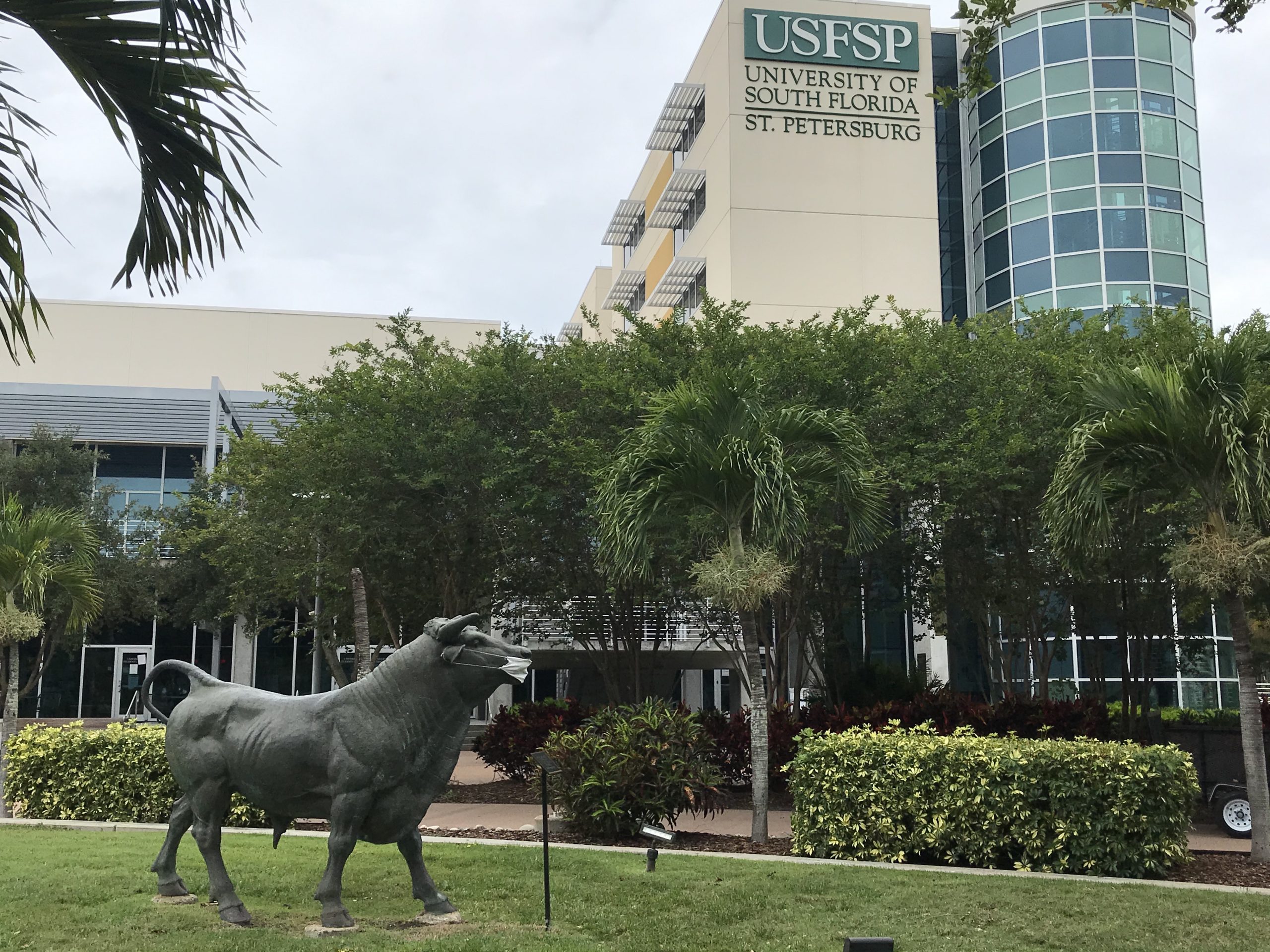Pictured Above: The African American Burial Grounds and Remembering Project is one of 23 research projects selected for funding by a recently launched anti-racism research initiative at the university.
Courtesy of Cassidy Schuck
By Michael Alden
A new research project at USF aims to preserve the history of African American burial grounds in Tampa Bay.
The African American Burial Grounds and Remembering Project is one of 23 research projects selected for funding by a recently launched anti-racism research initiative at the university.
In their proposal last summer, advocates said: “The proposal focuses on activities to identify, interpret, preserve and record unmarked, previously abandoned and underserved African American burial grounds in Florida, with a focus on Tampa’s Zion Cemetery and St. Petersburg’s Oaklawn Cemetery.”
A team of faculty, graduate students and members of the community will partner together to identify burial grounds and create a historical record of these sites by interviewing connected individuals and investigating community archives.
Researchers will use photographs, videos, archives and oral histories to design an interactive digital map of the burial grounds.
These segregated cemeteries were often neglected or forgotten over the span of the 20th century in favor of urban development. In some cases, gravesites were cemented over.
Dr. Antoinette Jackson, anthropology chair and professor will be leading the initiative.
“Churches and where people are buried give you a feel for what that community is about,” Jackson said in a university press release. “With this project, we hope to bring in the living community to understand the heritage of place by engaging with cemeteries and their history.”
The two cemeteries the project will focus on first include Zion Cemetery, located north of downtown Tampa, and Oaklawn Cemetery in St. Petersburg, a cemetery that was located under parking lots at Tropicana Field but was moved in the mid-20th century.
Last July, archaeologists found around 300 coffins below the surface of land owned by the Tampa Housing Authority where the former Zion Cemetery was located. Empty Robles Park Village apartment buildings currently occupy the space above the burial site.
The archaeologists believe they could still find hundreds more and discovered evidence that some coffins were moved.
Bodies are also believed to have been left behind at the former Oaklawn Cemetery. It remains to be seen how the recent redevelopment plans for Tropicana Field could impact the research project there.
Researchers will consult with the communities the burial grounds are located in to see how they would like these sites to be utilized and remembered.
Communications are also planned between researchers and local business owners to prevent history from repeating itself.
The USF Research Task Force on Understanding and Addressing Blackness and Anti-Black Racism in our Local, National and International Communities was formed in July in response to long-standing issues of racism and institutional violence.
Funding for the 23 projects selected by the task force comes from the Office of the Provost, USF Research & Innovation and the Florida High Tech Corridor Council. A total budget of $500,000 was allocated for the year-long projects.
Researchers hope to receive additional funding to expand the project and cover other neglected cemeteries in Tampa Bay.
USF President Steve Currall highlighted the university’s principles of diversity and its commitment to research in a statement last September when the projects were announced.
“The University of South Florida has a responsibility to help create a civil, humane and compassionate society that deeply values diversity and inclusion,” Currall said. “Advancing innovative, interdisciplinary research is a key element of our active commitment to addressing racism in society.”




Having done work in undergraduate in cemetery research, I later became a specialist and collector in Black American Folk Art. I recently came across an African American graveyard while avoiding Ian in Monticello, Fl. It’s exciting and like treasure hunting (sorta, but respectfully) and any African related artifacts should always be the property of those who live there-in. Happy to lend a hand in research, and astounded to see how many grave yards are around ST. Petes. Please call on my for basic research.
RIchard E.